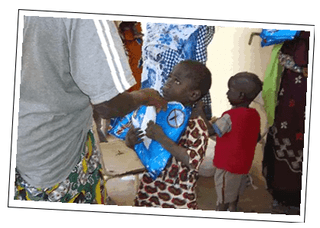Oxfam Vs Nothing But Nets
 The Science of Giving is a fantastic publication that should be on the shelf of every fundraiser. It summarises some of the most important social experiments that have helped to highlight the reasons behind low response rates and high levels of attrition.
The Science of Giving is a fantastic publication that should be on the shelf of every fundraiser. It summarises some of the most important social experiments that have helped to highlight the reasons behind low response rates and high levels of attrition.
The chapter by Cynthia Cryder and George Loewenstein is a particular favourite. A couple of the experiments they recount neatly demonstrate the connection between tangibility and generosity.
In the first example, two groups were presented with information about Oxfam and asked to decide how much, if anything, they wished to donate.
The first group had Oxfam described to them in a tangible way, and were told that one way donations are used is to provide clean water to villagers in West Africa.
The second group received an intangible description explaining that donations would go to a broad range of projects throughout the world.
Not surprisingly, the participants who read about Oxfam in a tangible way donated almost twice as much as those who received the general information.
The second experiment took a similar approach, with one group presented with information about Oxfam whereas the second group heard about a relatively small niche charity, Nothing But Nets, an organisation that provides mosquito nets to poor families in Africa.
Consistent with the results from the previous study, participants who read about Nothing But Nets donated almost three times as much as the participants who read about Oxfam.
When questioned about this difference, the donors who had given to the more tangible examples explained their higher levels of generosity quite simply – they felt their gift would have more of an impact. Something that has three important implications:
- It helps increase levels of trust.
- It provides the donor with the feeling that they are making a measurable difference rather than just adding a small drop of help to a massive ocean of need.
- It encourages an emotional connection, leaving a donor with a far more powerful memory of the experience than if they just handed over money to a relatively impersonal brand.
Which helps demonstrate the reason why it's always worth getting on the phone, bike, bus, train or even plane to gather the first hand examples to show a donor just how they are going to make a difference.
Tags In
The Essentials

Crack the Code to Regular Giving: Insights, Strategies, and a Special Giveaway!

‘Tis Halloween. Keep to the light and beware the Four Fundraisers of the Apocalypse!

Why do people give? The Donor Participation Project with Louis Diez.

A guide to fundraising on the back of a postcard

What does the latest research tell us about the state of fundraising?





